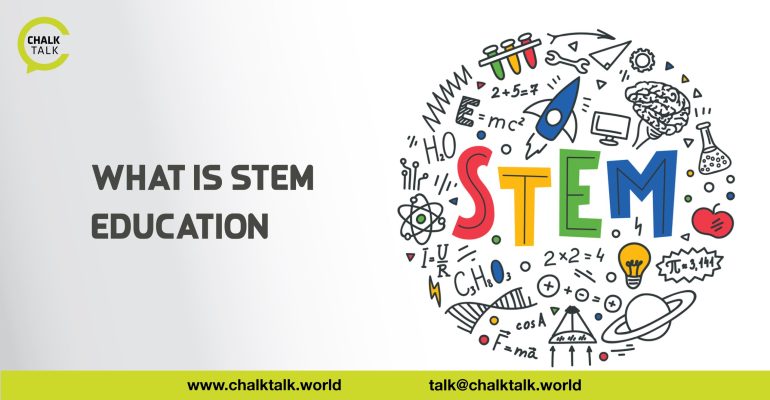What is STEM education?
June 20, 2023 2023-06-26 8:25What is STEM education?
In today’s rapidly evolving world, the demand for individuals skilled in science, technology, engineering, and mathematics (STEM) is skyrocketing. STEM education has emerged as a powerful approach to equipping students with the knowledge and skills necessary to thrive in the 21st-century workforce. But what exactly is STEM education, and why is it gaining such prominence? Let’s delve deeper into STEM and uncover its significance in preparing the next generation for success.
STEM education encompasses an interdisciplinary approach that integrates science, technology, engineering, and mathematics principles into a cohesive learning experience. It goes beyond traditional subject silos and encourages students to apply critical thinking, problem-solving, and analytical skills to real-world challenges. By fostering curiosity, creativity, and collaboration, STEM education prepares students to become innovative thinkers and problem solvers who can tackle complex issues facing our society.
One of the key elements of STEM education is its emphasis on hands-on, experiential learning. Rather than simply memorizing facts and theories, students actively participate in designing experiments, building prototypes, coding programs, and conducting investigations. These immersive experiences deepen their understanding of STEM concepts and cultivate a passion for exploration and discovery.
Integrating STEM into the curriculum opens a world of possibilities for students. They develop essential skills such as critical thinking, communication, teamwork, and adaptability, which are highly valued in today’s ever-changing job market. STEM education prepares students for careers like robotics, artificial intelligence, data science, renewable energy, biomedical engineering, aerospace, and more. By equipping them with a strong foundation in STEM, we empower students to embrace technological advancements, contribute to scientific breakthroughs, and shape the future of innovation.
Moreover, STEM education nurtures a growth mindset in students. It encourages them to embrace challenges, persevere through failures, and see setbacks as opportunities for learning and improvement. In STEM classrooms, students learn to think critically, analyze problems from multiple perspectives, and develop innovative solutions. They become adept at using technology for exploration and inquiry, harnessing its power to collect data, visualize concepts, and communicate their findings.
To effectively incorporate STEM education, educators must receive adequate training and support. Professional development opportunities, workshops, and collaborative networks can help educators stay abreast of emerging trends, innovative teaching strategies, and best practices in STEM education. By fostering a community of passionate and knowledgeable educators, we create an ecosystem where STEM thrives and students receive high-quality instruction. Furthermore, partnerships with industry professionals, research institutions, and community organizations can enhance the impact of STEM education. Guest speakers, field trips, and mentorship programs expose students to real-world applications of STEM and inspire them to pursue careers in these fields. Engaging students in competitions, science fairs, and coding challenges nurtures their competitive spirit and builds their confidence as they showcase their STEM skills.
STEM education promotes inclusivity and diversity by breaking down barriers and challenging stereotypes. Traditionally, certain fields within STEM, such as engineering and computer science, have been male-dominated. However, through intentional efforts to encourage and support underrepresented groups, STEM education aims to bridge the gender and diversity gap. By providing equal opportunities and fostering an inclusive environment, we empower students from all backgrounds to pursue their passions in STEM and contribute their unique perspectives to the field.
Furthermore, STEM education goes beyond classroom walls and encourages students to engage with their communities and the world. Through service-learning projects, students can address local issues using STEM principles. They collaborate with community members, analyze data, and propose innovative solutions. This hands-on approach strengthens their STEM skills and instills a sense of social responsibility and empathy. STEM education encourages students to become active global citizens who understand the societal impact of their knowledge and skills.
In a rapidly advancing technological landscape, the need for STEM professionals will continue to grow. By instilling a strong foundation in STEM education, we empower students to pursue fulfilling careers while contributing to the betterment of society. The skills and mindset developed through STEM education extend far beyond the classroom, shaping adaptable individuals and lifelong learners prepared to navigate the challenges and opportunities of the future.
STEM education also plays a crucial role in fostering creativity and innovation. While it emphasizes scientific and technical knowledge, it also encourages students to think outside the box and explore new possibilities. Integrating art and design into STEM allows us to cultivate a well-rounded approach that blends analytical thinking with creative problem-solving. This interdisciplinary approach sparks curiosity and will enable students to develop innovative solutions to real-world challenges. Whether designing sustainable buildings, creating user-friendly technology, or developing breakthrough medical treatments, STEM education empowers students to become the architects of change. It encourages them to embrace failure as an opportunity for growth, to take risks, and to push the boundaries of what is possible. By nurturing their imagination and instilling a passion for exploration, STEM education paves the way for groundbreaking discoveries and advancements that shape the future.
In conclusion, STEM education is a catalyst for empowering the next generation. By equipping students with the knowledge, skills, and mindset required for success in STEM fields, we prepare them to navigate a rapidly evolving world and contribute to solving global challenges. STEM education fosters scientific literacy and cultivates essential skills that transcend disciplines. Let’s embrace the power of STEM education and unlock the potential of our students to create a brighter, more innovative future.



